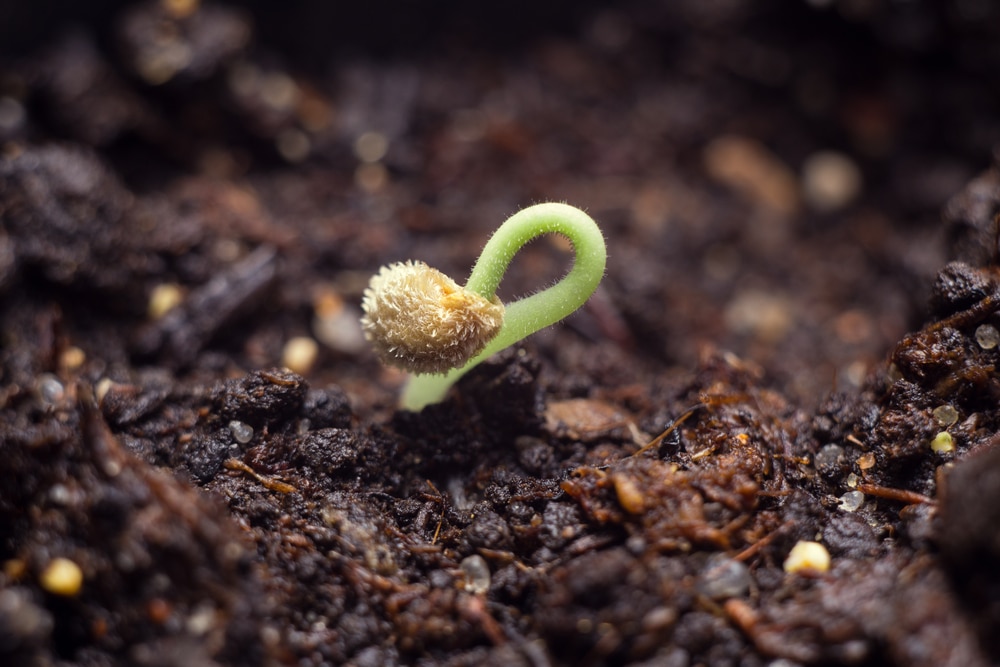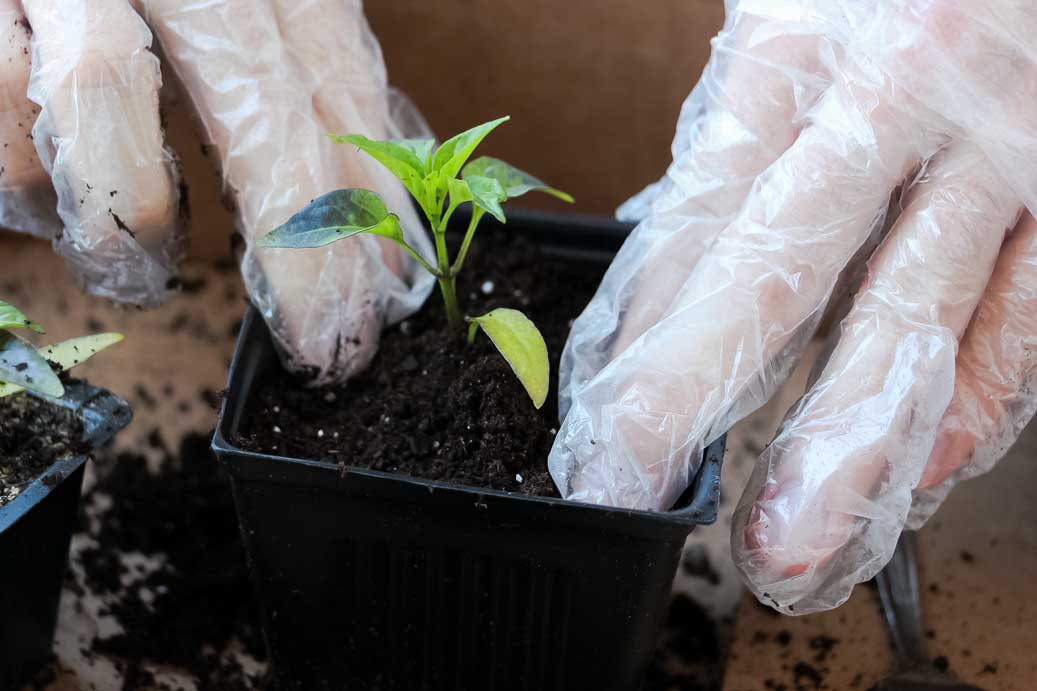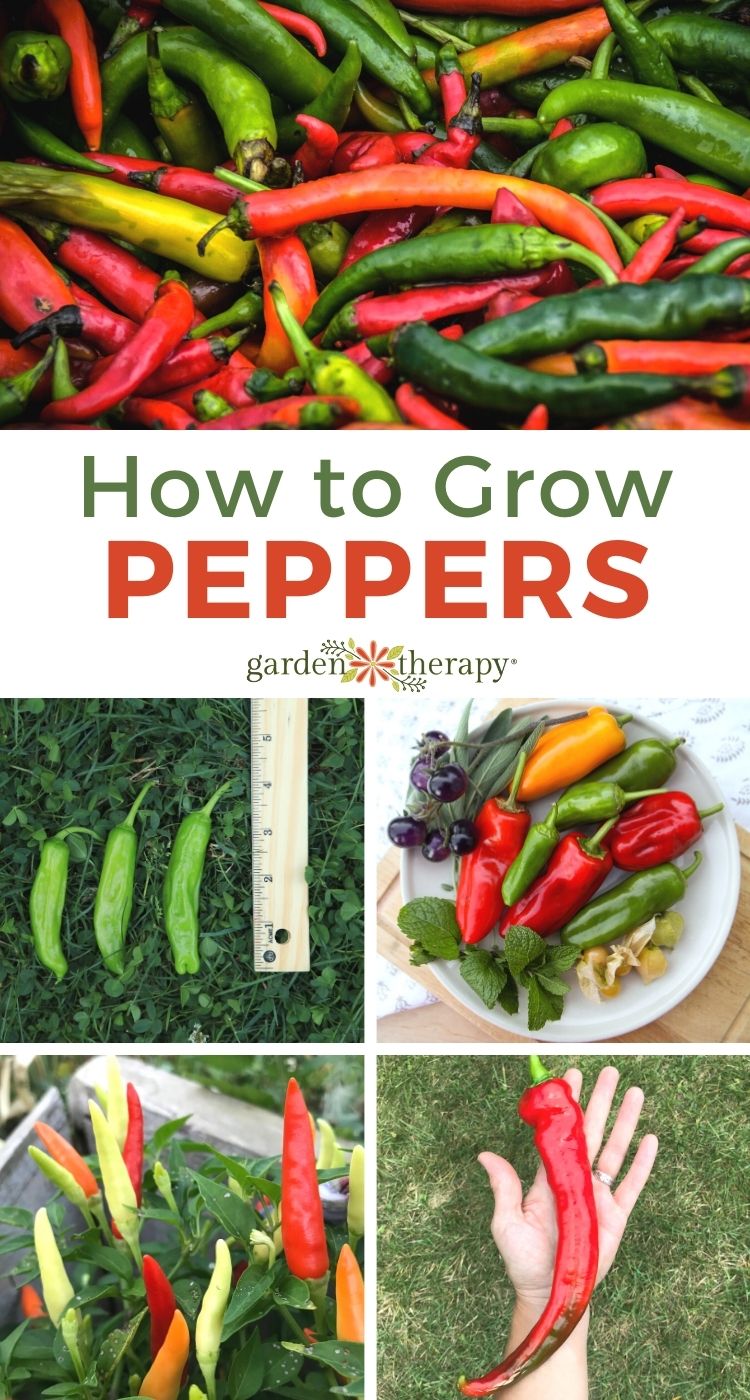Preparing the Perfect Environment for Sweet Pepper Seeds
When it comes to planting sweet pepper seeds, creating the right environment is crucial for successful germination and growth. Sweet pepper seeds require a warm and humid climate to thrive, with temperatures ranging from 75°F to 85°F (24°C to 30°C). To achieve this, consider using a heated propagation tray or a warm location, such as a sunny windowsill or a greenhouse.
In addition to temperature, sweet pepper seeds also require adequate light to germinate. Provide 12 to 14 hours of supplemental lighting, such as LED grow lights, to ensure the seeds receive the necessary light intensity. Humidity is also essential, with a relative humidity of 80% to 90% ideal for germination.
Another critical factor is air circulation. Ensure good air movement around the seeds to prevent fungal diseases and promote healthy growth. This can be achieved by providing a gap of at least 6 inches (15 cm) between the seeds and any nearby surfaces.
By providing the right environment, you’ll be well on your way to successfully planting sweet pepper seeds. Remember to maintain a consistent temperature, humidity, and light level to promote healthy germination and growth.
For optimal results, consider using a seed starting mix specifically designed for sweet peppers. These mixes typically contain a balanced blend of nutrients and pH levels tailored to the needs of sweet pepper seeds.
By following these guidelines, you’ll be able to create the perfect environment for your sweet pepper seeds to thrive. With the right conditions in place, you’ll be able to enjoy a bountiful harvest of delicious and nutritious sweet peppers.
Choosing the Best Sweet Pepper Variety for Your Garden
With numerous sweet pepper varieties available, selecting the right one for your garden can be a daunting task. However, by understanding the different types of sweet peppers and their characteristics, you can make an informed decision and enjoy a bountiful harvest.
Bell peppers are one of the most popular sweet pepper varieties, known for their blocky shape and sweet, slightly crunchy texture. They come in a range of colors, including green, red, yellow, and orange. Pimento peppers, on the other hand, are smaller and more heart-shaped, with a sweet, mild flavor.
Other sweet pepper varieties include cubanelle, banana, and sweet cherry peppers. Cubanelle peppers are long and thin, with a sweet, slightly smoky flavor. Banana peppers are small and yellow, with a sweet, tangy flavor. Sweet cherry peppers are small and round, with a sweet, slightly sweet flavor.
When selecting a sweet pepper variety, consider your climate and the level of sweetness you prefer. If you live in a cooler climate, choose a variety that matures quickly, such as bell peppers or pimento peppers. If you prefer a sweeter pepper, choose a variety like cubanelle or sweet cherry peppers.
It’s also essential to consider the days to maturity when selecting a sweet pepper variety. Days to maturity refer to the number of days it takes for the pepper to mature from sowing the seeds. Choose a variety that matures within the growing season in your area.
By choosing the right sweet pepper variety for your garden, you’ll be able to enjoy a bountiful harvest of delicious and nutritious sweet peppers. Remember to follow the specific growing instructions for your chosen variety to ensure optimal growth and flavor.
Once you’ve selected your sweet pepper variety, you can begin preparing the soil and sowing the seeds. In the next section, we’ll discuss how to sow sweet pepper seeds for maximum germination.
How to Sow Sweet Pepper Seeds for Maximum Germination
Sowing sweet pepper seeds requires attention to detail and a gentle touch. To ensure maximum germination, follow these step-by-step instructions:
Step 1: Prepare the Soil
Fill a seed starting tray or small pots with a well-draining seed starting mix. Moisten the soil with water, but make sure it’s not too wet or dry.
Step 2: Sow the Seeds
Place one or two sweet pepper seeds about ¼ inch (6-8 mm) deep in each cell or pot. Cover the seeds with a thin layer of soil. Firm the soil gently to ensure good contact with the seeds.
Step 3: Water the Seeds
Water the seeds gently but thoroughly. Make sure the soil is moist but not waterlogged. Avoid getting water on the leaves or crown of the seedling.
Step 4: Provide Warmth and Light
Place the seed starting tray or pots in a warm location with temperatures between 75°F to 85°F (24°C to 30°C). Provide 12 to 14 hours of supplemental lighting, such as LED grow lights.
Step 5: Maintain Humidity
Cover the seed starting tray or pots with a clear plastic bag or cloche to maintain humidity and promote germination. Check the seeds daily to ensure the soil is not too wet or dry.
Tips for Sowing Sweet Pepper Seeds:
Handle the seeds gently to avoid damaging them. Avoid sowing seeds too deeply, as this can reduce germination rates. Keep the soil consistently moist but not waterlogged. Provide adequate air circulation to prevent fungal diseases.
By following these steps and tips, you’ll be able to sow sweet pepper seeds successfully and enjoy a high germination rate. Remember to keep the soil moist and provide adequate warmth and light for optimal growth.
Creating a Nutrient-Rich Soil Mix for Sweet Pepper Seedlings
A well-balanced soil mix is essential for sweet pepper seedlings to grow and thrive. A good soil mix should provide the necessary nutrients, pH levels, and structure for optimal growth. In this section, we’ll discuss the importance of creating a nutrient-rich soil mix for sweet pepper seedlings and provide tips on how to create a homemade soil mix using organic ingredients.
Why is a Well-Balanced Soil Mix Important?
A well-balanced soil mix is crucial for sweet pepper seedlings because it provides the necessary nutrients for growth and development. Sweet pepper seedlings require a soil mix that is rich in organic matter, has a pH level between 6.0 and 6.8, and is well-draining.
Creating a Homemade Soil Mix
To create a homemade soil mix for sweet pepper seedlings, you’ll need the following ingredients:
1. Compost: Compost is a rich source of organic matter and nutrients. You can make your own compost at home using kitchen scraps, leaves, and other organic materials.
2. Peat Moss: Peat moss is a natural soil conditioner that helps to retain moisture and improve soil structure.
3. Vermiculite: Vermiculite is a natural mineral that helps to improve soil structure and retain moisture.
4. Perlite: Perlite is a natural mineral that helps to improve soil drainage and aeration.
Instructions for Creating a Homemade Soil Mix:
1. Mix 2 parts compost, 1 part peat moss, 1 part vermiculite, and 1 part perlite in a large bucket.
2. Add 1 tablespoon of balanced fertilizer (10-10-10) per gallon of soil mix.
3. Mix the ingredients well until they are fully incorporated.
Tips for Creating a Homemade Soil Mix:
Use high-quality ingredients to ensure a well-balanced soil mix. Avoid using too much peat moss, as it can make the soil mix too acidic. Use a balanced fertilizer to provide the necessary nutrients for sweet pepper seedlings.
By creating a nutrient-rich soil mix for sweet pepper seedlings, you’ll be able to provide them with the necessary nutrients for growth and development. Remember to use high-quality ingredients and follow the instructions carefully to ensure a well-balanced soil mix.
Providing Adequate Water and Light for Sweet Pepper Seedlings
Proper watering and lighting are crucial for sweet pepper seedlings to grow and thrive. In this section, we’ll discuss the importance of providing adequate water and light for sweet pepper seedlings and provide tips on how to avoid overwatering and ensure adequate air circulation.
Watering Sweet Pepper Seedlings
Sweet pepper seedlings require consistent moisture, especially during the first few weeks after germination. Water the seedlings gently but thoroughly, making sure the soil is moist but not waterlogged. Avoid getting water on the leaves or crown of the seedling, as this can cause fungal diseases.
Lighting for Sweet Pepper Seedlings
Sweet pepper seedlings require bright, indirect light to grow and thrive. Place the seedlings in a sunny location, such as a south-facing window or under grow lights. Avoid direct sunlight, as this can cause the seedlings to become scorched.
Tips for Providing Adequate Water and Light:
Check the soil moisture daily to ensure it’s not too wet or dry. Avoid overwatering, as this can cause root rot and other problems. Provide adequate air circulation to prevent fungal diseases. Use a thermometer to monitor the temperature and ensure it’s within the optimal range for sweet pepper seedlings.
Common Mistakes to Avoid:
Overwatering is a common mistake that can cause root rot and other problems. Avoid getting water on the leaves or crown of the seedling, as this can cause fungal diseases. Insufficient light can cause the seedlings to become leggy and weak.
By providing adequate water and light, you’ll be able to give your sweet pepper seedlings the best chance to grow and thrive. Remember to check the soil moisture daily and provide adequate air circulation to prevent fungal diseases.
Common Mistakes to Avoid When Planting Sweet Pepper Seeds
Planting sweet pepper seeds can be a rewarding experience, but it’s not without its challenges. In this section, we’ll discuss common mistakes to avoid when planting sweet pepper seeds and provide tips on how to troubleshoot common problems and ensure successful germination.
Sowing Seeds Too Deeply
One of the most common mistakes when planting sweet pepper seeds is sowing them too deeply. Sweet pepper seeds should be sown about ¼ inch (6-8 mm) deep in the soil. Sowing them too deeply can cause the seeds to rot or fail to germinate.
Not Providing Enough Warmth
Sweet pepper seeds require warmth to germinate. If the soil is too cold, the seeds may not germinate or may germinate slowly. Make sure the soil is at least 75°F (24°C) before sowing the seeds.
Overwatering
Overwatering is another common mistake when planting sweet pepper seeds. Sweet pepper seeds require consistent moisture, but overwatering can cause the seeds to rot or fail to germinate. Check the soil moisture daily and avoid getting water on the leaves or crown of the seedling.
Insufficient Light
Sweet pepper seeds require bright, indirect light to germinate. If the light is too low, the seeds may not germinate or may germinate slowly. Make sure the seedlings are placed in a sunny location, such as a south-facing window or under grow lights.
Tips for Troubleshooting Common Problems:
Check the soil moisture daily to ensure it’s not too wet or dry. Avoid getting water on the leaves or crown of the seedling. Provide adequate air circulation to prevent fungal diseases. Use a thermometer to monitor the temperature and ensure it’s within the optimal range for sweet pepper seeds.
By avoiding these common mistakes and following the tips provided, you’ll be able to successfully plant sweet pepper seeds and enjoy a bountiful harvest.
Transplanting Sweet Pepper Seedlings into Larger Containers
Once sweet pepper seedlings have 2-3 sets of leaves, it’s time to transplant them into larger containers. This process can be a bit tricky, but with the right techniques, you can minimize shock and ensure continued growth.
When to Transplant:
The ideal time to transplant sweet pepper seedlings is when they have 2-3 sets of leaves and are about 1-2 inches (2.5-5 cm) tall. This is usually 1-2 weeks after germination.
How to Transplant:
1. Prepare the new container: Fill the new container with a well-draining potting mix, and moisten it with water.
2. Handle the seedlings gently: Carefully remove the seedlings from their original container, taking care not to damage the roots.
3. Plant the seedlings: Plant the seedlings in the new container, burying them up to the first true leaves. Firm the soil gently around the roots.
4. Water thoroughly: Water the seedlings thoroughly after transplanting, and keep the soil consistently moist.
Tips for Minimizing Shock:
1. Harden off the seedlings: Before transplanting, harden off the seedlings by gradually exposing them to outdoor conditions over the course of 7-10 days.
2. Use a well-draining potting mix: A well-draining potting mix will help prevent waterlogged soil and reduce the risk of root rot.
3. Avoid overwatering: Water the seedlings thoroughly after transplanting, but avoid overwatering, which can cause root rot and other problems.
By following these steps and tips, you can successfully transplant your sweet pepper seedlings into larger containers and enjoy a bountiful harvest.
Enjoying a Bountiful Harvest of Sweet Peppers
After weeks of careful nurturing, your sweet pepper plants are finally ready to harvest. This is the most rewarding part of growing sweet peppers, as you get to enjoy the fruits of your labor.
Benefits of Homegrown Produce:
Homegrown produce is not only delicious, but it’s also packed with nutrients and antioxidants. Sweet peppers are a great source of vitamin C, vitamin B6, and potassium, making them a healthy addition to any meal.
Satisfaction of a Bountiful Harvest:
There’s nothing quite like the satisfaction of enjoying a bountiful harvest of sweet peppers. Whether you’re using them in a recipe or simply snacking on them fresh, the taste and texture of homegrown sweet peppers is unbeatable.
Tips for Caring for Mature Sweet Pepper Plants:
1. Continue to provide adequate water and light: Even after the plants have reached maturity, they still require consistent moisture and light to produce a bountiful harvest.
2. Fertilize regularly: Feed your sweet pepper plants with a balanced fertilizer to promote continued growth and fruit production.
3. Prune the plants: Prune your sweet pepper plants regularly to encourage bushy growth and prevent them from becoming leggy.
4. Monitor for pests and diseases: Keep an eye out for pests and diseases that can affect sweet pepper plants, such as aphids, whiteflies, and powdery mildew.
By following these tips, you’ll be able to enjoy a continuous harvest of sweet peppers and make the most of your homegrown produce.







